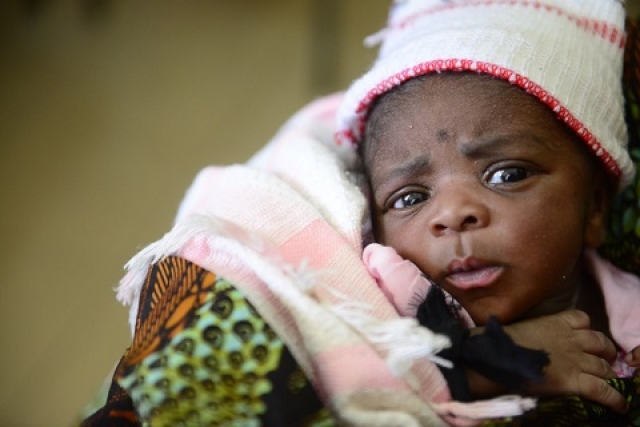How to save the lives of newborns in Africa
 Brazzaville, 17 December 2014 - According to a new WHO report, one third of all neonatal deaths occur in the African Region. Approximately three quarters of these deaths occur during the first week of life and almost half within the first 24 hours.
Brazzaville, 17 December 2014 - According to a new WHO report, one third of all neonatal deaths occur in the African Region. Approximately three quarters of these deaths occur during the first week of life and almost half within the first 24 hours.
The first 28 days of life, called the neonatal period, is a very risky period for babies. For every newborn baby that dies, another 20 will face illness or disability from conditions such as birth injury, infection, the inability to breathe normally after birth, neonatal tetanus, congenital anomalies, and the complications of premature birth.
Too many babies are also being born to mothers who have not had adequate nutrition and antenatal care during pregnancy and who were not given skilled care during the birthing process. These mothers are at the greatest risk of dying during or after delivery – leaving newborns at an even greater risk of dying from inadequate care and suboptimal feeding practices.
According to statistics, quality care with simple, accessible, cost–effective interventions can prevent up to two thirds of all neonatal deaths. One method that has worked to reduce neonatal deaths in the African Region is kangaroo mother care (KMC). KMC is caring for preterm infants by carrying the baby skin-to-skin, usually by the mother.
“Essential interventions that contribute towards improving the survival of newborn babies include skilled care during the time of delivery where resuscitation can be performed, if required, exclusive breastfeeding, kangaroo mother care for preterm and low-birth weight babies, and the prevention and treatment of infections,” said Dr Tigest Ketsela Mengestu, Director of the Health Promotion Cluster of the World Health Organization Regional Office for Africa.
Using KMC to care for stable preterm babies has been especially beneficial in resource-poor settings. It has been shown to reduce mortality among preterm babies (< 2000 g) in hospitals by 51% if started in the first week of life compared with incubator care.
Malawi is a prime example of where KMC has been successfully used in health care settings. It’s been reported that deaths of newborn babies have been reduced from 40 deaths per 1000 live births in 2000 to 24 deaths per 1000 live births in 2012. Malawi is one of the few countries in the Region that has already achieved its 2015 Millennium Development Goal 4 targets.
Another key to success in an African context is boosting community involvement. Many people do not go to a health care facility when they need care. Improving the quality of care at health facilities alone would not reduce neonatal and child mortality rates significantly. One way to improve this is to deliver more services through community providers.
Community health workers (CHWs) are examples of community providers. They are trained to visit pregnant women at home to educate mothers about nutrition, breastfeeding, prevention of mother-to-child transmission (PMTCT) of HIV, and on-going care requirements.
CHWs also play an important role in saving the lives of newborns through home visits during the postnatal period. This allows them to review the health of the newborn and the mother, and to connect them to appropriate health care services.
There is an urgent and on-going need for newborn health to be placed high on the global political agenda. Strong political commitments, the allocation of adequate resources, and the scaling up of a few known cost-effective interventions will save many newborn lives.
_________________________________________________
For additional information:
Technical contact:
- Dr Assumpta Muriithi
Tel: +472 413 9212
Email: muriithia [at] who.int (muriithia[at]who[dot]int)
Media contacts:
- Cory Couillard
Tel: +472 413 9995
E-mail: couillardc [at] who.int (couillardc[at]who[dot]int)
- Collins Boakye-Agyemang
Tel: + 472 413 9420
E-mail: boakyeagyemangc [at] who.int (boakyeagyemangc[at]who[dot]int)


